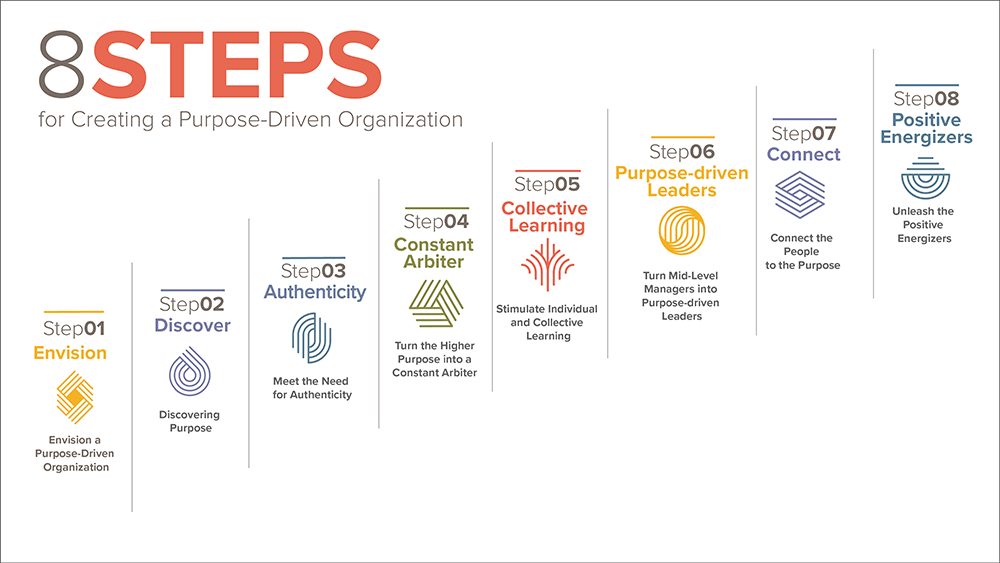Coach's VIEW is a business column authored by executive coaches in COACH A, aimed at providing valuable insights and effective approaches for leveraging coaching to foster organizational and leadership development. The column draws on the latest coaching trends and data, as well as insights from notable global publications on coaching.
Building a Purpose-driven Company - How the Concept of Ikigai Encourages Meaningful Business Growth

April 19, 2021

The pandemic forced the business world to change. And we were changed as a result. We shifted from working in the same space to working at home while juggling virtual relationships with family and friends. In short, we live and work differently. As a result of social distancing and lockdowns, we were reminded of what really matters in our work and life - our reason for living, our purpose.
This highlighted what many companies realized years ago - to maximize profits and productivity you need to be purpose-driven. This COVID crisis invites leaders to challenge their assumptions about motivation and performance and to experiment with new approaches.
Consider the concept of Ikigai (pronounced Ick-ee-guy). Ikigai is a Japanese term for this "reason for being" . It refers to a sense of meaningful direction or purpose in life, that lies at the crossroads of four areas of life: what you love, what you are good at, what you can be paid for, and what the world needs.
In essence, Ikigai is the flow of life, where each minute is being lived with a sense of purpose and meaning. In today’s terms, this is considered a wellness-focused workplace - holding the idea that we are engaged in our work and we work best when all aspects of our lives are striving for overall wellness or contentment both physically and mentally.
Gallup polls, including their most recent one, have consistently found that engagement and wellbeing are reciprocal; each influences the other. They are also additive, meaning each makes a “...unique but complementary contribution to the thoughts, feelings, behaviors, and performance outcomes of employees. When they work together, they are a super-charger for a thriving, productive workplace.” The survey found, when employees are engaged and thriving at work, burnout decreases, and productivity improves.
However, the 2020 poll, found employee engagement and well-being “...became disconnected from each other and went their own ways. This divergence highlights the renewed need to for workplace leaders to focus on employee engagement in the company’s mission.
Now is the time when top management must believe in incorporating purpose or a culture of wellness into their business and must be willing to change the way they work as required.
“Everything starts top-down”, says IKIGAI Coach Norm Tam. “The individuals at the top, be it a singular owner, partners or a board, all need to believe in the value of integrating purpose in their business and that purposeful companies actually outperform the market.”
Frank Brueck, author of IKIGAI for Leaders and Organisations, The Way to Individual and Collective Purpose and Meaning asserts that companies can operate very successfully in a dynamic and yet balanced way without falling into the trap of exploitation of people and the environment.
“This is a collective state of leadership and a collective state of IKIGAI for an entire organization,” says Brueck. “ It is reflected in the corporate culture, crystallises in behaviours and serves as a source of power and inspiration for all members of an organisation.”
Having a vision or mission statement that alludes to purpose is not enough. To put Ikigai to work for a company and its stakeholders, a transformative approach is needed to truly embody it, day-in and day-out. What kind of approach could we apply now?
In their book, The Economics of Higher Purpose: Eight Counter-Intuitive Steps for Creating a Purpose-Driven Organization, authors Anjan V. Thakor and Robert E. Quinn agree with Nguyen and suggest eight key steps as depicted in the graphic below

The statements are deliberately simple and counterintuitive, Thakor and Quinn state. “They are outside the conventional, managerial mindset.” This framework, asserts the authors, “...should help to overcome the largest barrier to embracing purpose--the cynical “transactional” view of employee motivation.”
The good news, according to Gallup, is that employee engagement and wellbeing can greatly insulate workers from the pandemic's potentially damaging effects on life.
People who find meaning in their work freely engage and are intrinsically motivated. They are dedicated, defying conventional assumptions that more money or perks is what makes a devoted workforce. “They grow rather than stagnate,” according to Thakor and Quinn. “They do more--and they do it better. By tapping into that power, you can transform an entire organization.”
One suggestion that came out of the recent Gallup survey is to have employees identify the element of wellbeing they feel comes naturally. Consider having employees in one-on-one or small-group meetings describe the element of wellbeing that they gravitate to most easily. Let’s learn about what factors in life and work motivate them to succeed, and how they succeed, providing examples for others while simultaneously honoring what they are best at in their lives and in the workplace.
[References]
Why do purpose-driven companies do better?
February 1, 2019
by Peter Fisk
The Wellbeing-Engagement Paradox of 2020
By Ben Wigert, Sangeeta Agrawal, Kristin Barry And Ellyn Maese
Rehumanizing Business: Putting Purpose Back Into Your Company
By Norm Tam
IKIGAI for Leaders and Organizations
The Way to Individual and Collective Purpose and Meaning
By Frank Brueck
The Economics of Higher Purpose: Eight Counter-Intuitive Steps for Creating a Purpose-Driven Organization, authors Anjan V. Thakor and Robert E. Quinn
IKIGAI: Reflection on Life Goals Optimizes Performance and Happiness Schippers, M.C., 2017. ERIM Inaugural Address Series Research in Management EIA-2017-070-LIS, Erasmus Research Institute of Management (ERIM.
*Regardless of profit, non-profit or intranet, secondary use such as copying, diversion, selling etc. is prohibited without permission.
